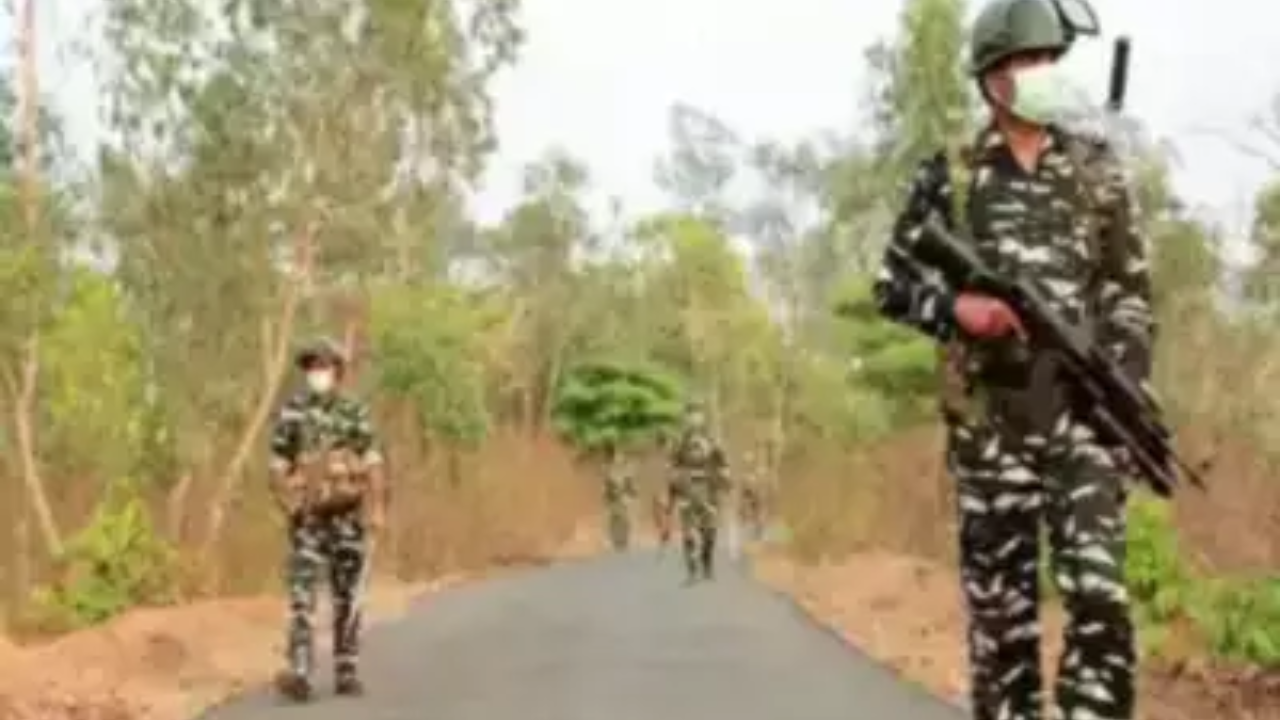Two Naxalites Killed in Chhattisgarh Encounter: A Bloody Day in India's Red Corridor
In a dramatic turn of events, the peace of the Gariaband district in Chhattisgarh was shattered on Monday. A fierce gun battle erupted between security forces and Naxalite rebels, leaving two female Naxalites dead. The clash, which involved a joint team of Chhattisgarh's District Reserve Guards, CRPF, Cobra commandos, and Odisha's SOG, paints a grim picture of the ongoing conflict in India's Naxal-affected regions. This intense encounter raises serious questions about the future of peace and security in this volatile area, and highlights the ever-present danger faced by those fighting on the front lines.
The Deadly Clash: A Day of Fierce Fighting
The encounter unfolded in the dense forests of the Mainpur region, a known Naxalite stronghold straddling the border of Chhattisgarh and Odisha. The fighting, which began in the morning, continued intermittently throughout the day, finally ending in the evening with the recovery of two female Naxalite bodies. The intensity and duration of the firefight underscores the determination of both sides, and the risks involved in operations targeting heavily armed and entrenched rebel groups. Reports also indicated a Cobra commando suffered minor injuries during the encounter and is recovering well.
The Aftermath: Casualties and Investigations
While the loss of life is undoubtedly tragic, the success of the operation in neutralizing two key Naxalite members serves as a small victory in the larger conflict. Security forces are investigating the precise details of the operation, including an evaluation of the intelligence leading to the raid. Furthermore, there is continued effort to establish the identity of the deceased rebels and learn more about their involvement in recent actions. Such painstaking detail reveals how carefully these forces are managing a large-scale operation affecting an enormous area with an intricate set of players.
The Naxalite Threat: Understanding the Conflict
The Naxalite insurgency, a decades-long Maoist rebellion in central and eastern India, is often labeled as "India's Red Corridor." This conflict affects more than just those within the active battlezones, impacting society economically, environmentally, and politically. It reflects historical inequalities, marginalization, and deeply-seated grievances which manifest in various, frequently-overlapping political actions and challenges to the established order. The recent increase in encounters underscores the persistent nature of this challenge, particularly amidst persistent and often unpredictable climate change influences on agricultural practices and displacement and subsequent impoverishment of entire populations.
Challenges and the Path to Peace
Dealing with the Naxalite insurgency requires a multi-pronged approach. The current situation involves both military and civil strategies in the hopes of delivering a more robust response. These approaches require coordinated actions across multiple governmental levels and stakeholders, bringing together regional resources and coordinating effective communication to streamline counter-terrorism efforts, protect those at risk, and offer options for integrating combatants with larger communities.
The Bigger Picture: Naxalism's impact on Chhattisgarh and Beyond
The death toll this year is alarming, signaling a persistent threat demanding immediate attention and comprehensive solutions. The killing of 28 Naxalites thus far reflects both the challenges that remain to achieving and maintaining long-term peace and the active measures underway to effectively confront these groups.
Long-term strategies for addressing Naxalism:
To address the root causes, initiatives must include improved governance, social development, economic opportunities, and strengthening local self-governance in this challenged region. Moreover, greater collaboration among states in affected areas, in conjunction with other national and even international levels, is urgently required to promote regional economic development, alleviate existing conditions leading to violence, and effectively address issues surrounding land distribution, access to resources, and participation in larger societal issues.
Take Away Points
- The recent encounter highlights the ongoing challenges posed by Naxalite groups in India's central region.
- A multi-pronged strategy encompassing military operations and socio-economic development is crucial to curb the insurgency.
- Addressing the root causes of Naxalism—poverty, injustice, and marginalization—is essential to establish lasting peace in affected areas.
- International collaboration and regional coordination can help strengthen peace initiatives.
- Consistent monitoring and analysis of patterns of unrest across the affected region allow for improved strategies to combat violence.




